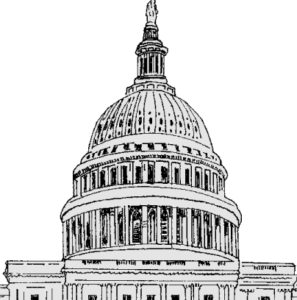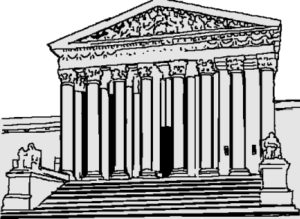
AMP | Kids is proud to partner with The Mini Page, celebrating over 50 years of providing engaging and fun learning opportunities to young readers across the country. This feature was originally syndicated in newspapers the week of April 25 – May 1, 2020. It is distributed digitally here with permission from Andrews McMeel Syndication. Enjoy and share with the young learners in your life!
Separation of powers
The men who wrote our Constitution knew they wanted a strong national government.
The government under the Articles of Confederation just did not work. The delegates feared that giving too much power to any one person or group could be dangerous.
The delegates decided that the powers of government should be divided. This idea is called separation of powers.

The Legislative Branch is Congress. The House of Representatives and Senate make laws, impose taxes and borrow money.

The Executive Branch is headed by the president. The president has many jobs. One is to see that the laws are carried out.

The Judicial Branch is headed by the Supreme Court, which decides whether laws passed by Congress are in keeping with the Constitution.
Compromise
How was the new Congress to be set up? How many members could each state send to Congress? These were big questions. It was a debate between big and small states.
Different ideas
Virginia was a big state. The Virginians suggested that the number of members be decided by the number of people who lived in the state.
A smaller state, New Jersey, suggested that all states have the same number of members.
The Great Compromise
Connecticut came up with what is called “The Great Compromise.”
This plan set up two lawmaking groups, or “houses,” as they are called. The House of Representatives was to be based on the number of people living in each state.
The other house, the Senate, was to have the same number of members (two) from each state. Laws had to be passed by both houses.
Article I
The Constitution is divided into seven articles. Each article has different sections. Article I deals with the legislative branch.
Section 1
The Legislative Branch will consist of a Senate and House of Representatives.
Section 2
A member of the House of Representatives:
- must be at least 25 years old.
- must be a citizen of the United States for at least seven years.
- is elected for a two-year term.

Section 3
A member of the Senate:
- must be at least 30 years old.
- must be a citizen of the United States for at least nine years.
- is elected for a six- year term.
Section 4
This section addresses when elections are to be held and when the Congress shall meet.
Section 5
Deals with the important ways Congress does its business. Each house of Congress can set its own rules. Each house is to keep a journal, or official record.
Section 6
Members of Congress are paid by the U.S. government. They cannot serve any other government while in Congress.
Section 7
Explains how a bill becomes a law.
Section 8
Lists the enumerated powers of Congress.
Section 9
Lists the limitations on the powers of Congress.
Resources:
On the Web:
Teachers: For standards-based activities to accompany this feature, visit Andrews McMeel Syndication. And follow The Mini Page on Facebook!
